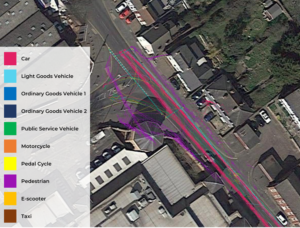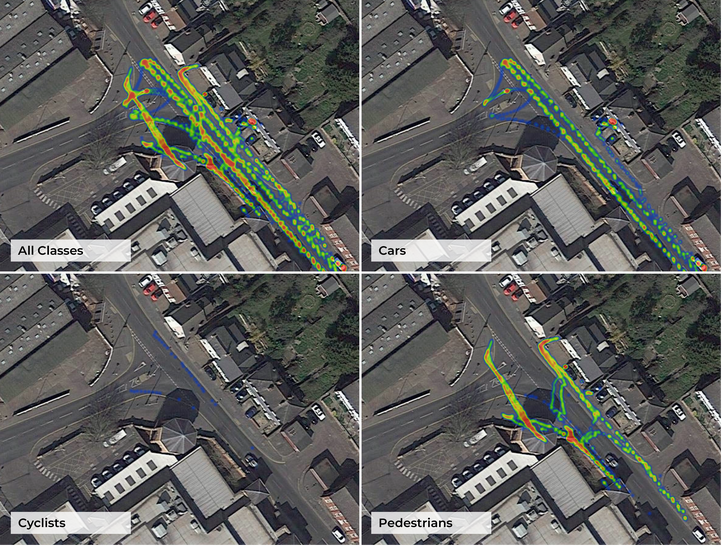Route Konnect, a developer of IoT sensors for infrastructure and video analytics to track traffic and congestion movements in real time, has unveiled more details about its solution to accurately monitor all road users as it seeks to offer a “Google Analytics of physical spaces” service.
Route Konnect offers connected, multi-camera, movement insights without the need for controversial facial recognition or ANPR, giving stakeholders such as councils, surveyors, and planners vital fully anonymized intelligence to help them understand the use of road and urban space. For traffic surveyors, results are automated, giving faster, more accurate and more cost-effective reporting, the firm noted.
To date, camera technology has given stakeholders a disjointed view, failing to show the full journey of road users moving across larger junctions or through cities. Route Konnect provides the full picture, and does so in the form of turning counts, heat maps and desire line visualizations.
CEO Mohamed Binesmael said: “There’s long been a quest for alternatives to manually counting traffic and outdated, unreliable induction loop technology. We have addressed this with camera technology that can be installed and maintained with minimal disruption to road users and that can provide traffic data with 95% accuracy for turnings at junctions.
“In addition, urban planners want to take into consideration space to be used by cyclists, pedestrians, and new modes of micro-mobility such as e-scooters – and old technology simply can’t provide the necessary depth of insights. This is about capturing the way that people behave, including desire lines used by pedestrians – which may of course be radically different from the routes originally intended by planners,” Binesmael added.

Binesmael also pointed out the growing legal pushback in the UK and EU against the use of facial recognition technology, with GDPR adding to the challenges: “Existing vehicle and transport analytics platforms use either facial recognition technology or process camera data in individual locations in isolation, providing over-simplified vehicle counts or data that has been aggregated,” he explained. “Route Konnect delivers a joined-up approach, making critical data available to traffic managers to help consider the full end-to-end customer journey for improving societal, environmental and economic impacts.”
Route Konnect is also set to launch a new traffic light automation system next year, doing away with the need for induction loops. “The drawbacks of induction loops are well known,” said Binesmael. “They are unable to detect small vehicles or pedestrians; they can be damaged by road deterioration or heavy vehicles; there is disruption to traffic during installation and ongoing maintenance; and they are sensitive to temperature fluctuations and affected by water penetration.”
Because of the cost and disruption, once loops are damaged (which happens on average after to two years, Route Konnect noted), they often are left to lie dormant. This not only loses the benefits of optimizing traffic light cycles but also misses the opportunity to collect valuable insights for road authorities.
Route Konnect’s product offers an above-ground, accurate, low maintenance solution to facilitate traffic light automation and provide planners with valuable data – both working hand in hand to make traffic flows up to 30% more efficient by responding to different traffic conditions.
Route Konnect will showcase an interactive 3-D digital twin using data from a recent project, at Highways UK at the NEC in Birmingham, UK, on November 2-3. “We’re ready to change the way the world understands people and vehicle behavior and use intelligent data to save our time, our money and our planet,” concluded Binesmael.





